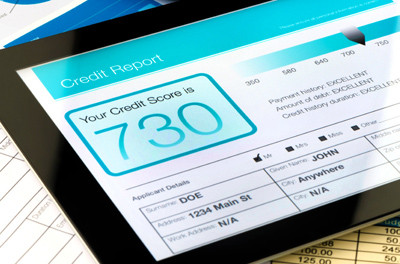When maintaining or improving your credit score is important to you, there’s nothing more intimidating than making a purchase that you’re not entirely sure is secure. As more and more business transactions happen online, it’s becoming increasingly commonplace to make even everyday purchases over the internet. So how do you protect yourself — and your credit — when so much of your personal information is on the line?
- Check the SSL Certificate of the Website
It’s simple and easy to make sure you’re browsing on a secure site — just look at the web address. Secure payment sites always begin with “https,” in which the “s” stands for “secure.” Most internet browsers also feature a closed lock symbol in the search bar (not on the webpage) that shows you when you’re browsing on a secure website.
If you want to go further, you can also read the website’s SSL certificate. The certificate shows that the website is able to encrypt information, and acts as a secondary verification that the owners of the website are who they say they are. Simply click the lock symbol in your search bar to see the certificate for yourself.
- Don’t Forget to Sign Out
If you share or use a public computer, always be certain to use a private browsing session and sign out of any website you’ve signed into. Certain websites and even internet browsers will keep your information on file until you sign out for your convenience — but this is asking for trouble if anyone but you uses the computer, even if you’ve closed the browser or turned the computer off.
- Pay With Credit Cards, Not Debit Cards
The bulk of credit cards provide protection against fraud, but most debit cards don’t. Think of it this way: when you use your debit card, you’re paying with cash. And when the cash is gone, there’s no getting it back. Credit cards and established companies like PayPal offer good protection for anyone making online purchases.
- Update Your Internet Browser
Internet security changes all the time, so you’ll want to be certain you’re using the newest — and safest — version of your internet browser. It can be a hassle in the moment, but think of how much more secure you’ll be knowing you are up-to-date with the latest security standards.
- Beware of Phishing Scams
You’ve heard it before, but it bears repeating: Never, ever give out your personal financial information via email, even if you receive a legitimate-seeming email from your financial institution, or another company you’ve done business with. Scam artists can create very convincing-looking emails (“phishing”) to prey on those who are not in-the-know. Look up the official phone number for the company and call them directly to discuss any sensitive information.
More than anything, be aware of what’s going on with your credit statement and your credit score so you can fix any issues before they get out of hand. Maintain good sense, strong passwords, and a vigilant eye on your spending, and you’ll be in a far better position to spend safely, online and off.



[…] How to Play It Safe With Online Financial Transactions Click Here […]
[…] Read the whole article here. https://nationalcreditfederation.com/how-to-play-it-safe-with-online-financial-transactions/ […]